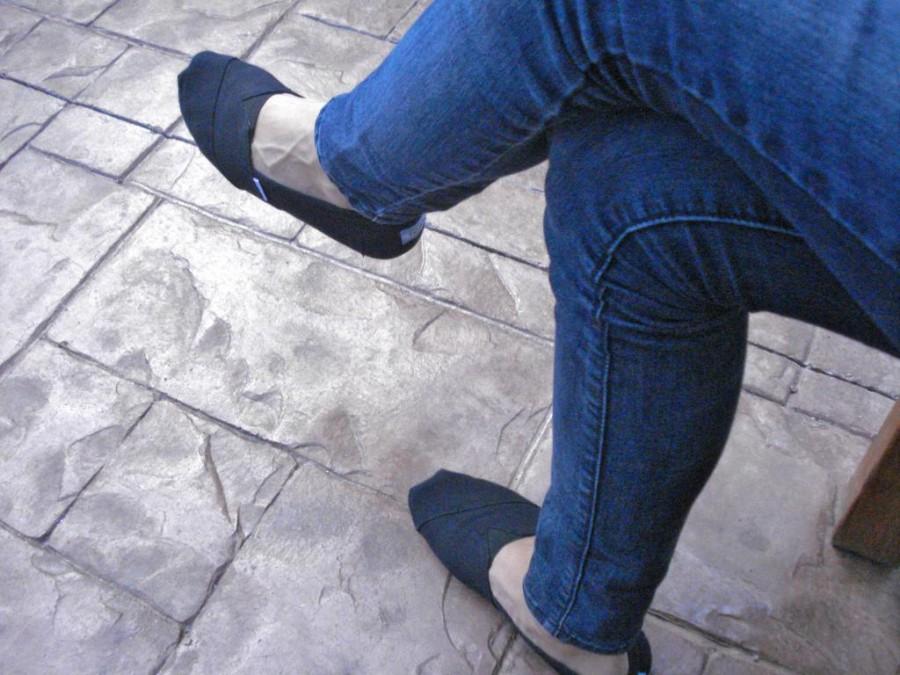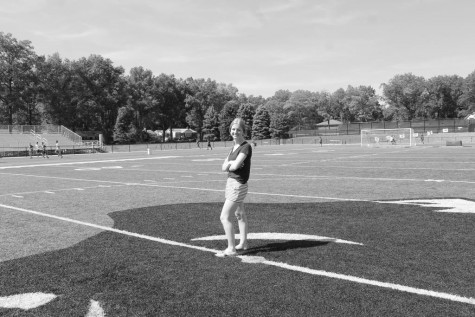Jeans fade out of casual Fridays
June 4, 2015
Glen Rock teachers are no longer permitted to wear blue jeans on Fridays, according to a clarification of the faculty dress code by the district superintendent .
Glen Rock High School’s Policy Code 4119.22 states that the school board “expects all staff members to be neatly groomed and dressed in clothing suitable for the subject of instruction, the work being performed, or the occasion.”
Previously, teachers were permitted to wear jeans on Fridays. The recent clarification of the wording rescinds that understanding.
“A school is a more formal environment. I do think there are different standards of dress for certain professions,” Superintendent Dr. Paula Valenti said. “In education, if we want to be professional, we need to dress the part.”
Jeans come in an extensive variety of styles and are sometimes considered the most comfortable and durable item in a wardrobe, but a pair of jeans can also be seen as the most causal article of clothing.
According to Cotton Incorporated, on average, Americans own seven pairs of jeans in their wardrobe.
Despite the popularity of jeans, some teachers have had to alter plans for Friday outfits.
“Jeans are not professional dress,” Valenti explained. “If teachers were going to be interviewed for a job, they would most likely not come dressed in jeans. They could if they choose and that would certainly make a statement to the employer.”
When Valenti began her employment in Glen Rock in March 2013, she began to talk to her administrative team about professional dress.
“It has been a big deal because it has been talked about since I first arrived and there are some people who are still wearing blue jeans,” she said. “The administration brought it to the teachers in 2013 and they all might not have been as receptive to it as we would have liked them to be.”
The district policy for the dress code has not changed since Valenti started, but it has recently been more strictly enforced, as Valenti believed that some teachers were not following the guidelines.
For students in the schools, the issue is also divisive.
“I think a lot of the authority a person has comes from their presentation,” said Jane Smith*, a junior. “Of course, how they act and carry themselves and conduct class is mostly what contributes to it, but I think dressing professionally in a setting that calls for it is a demonstration of respect for what you’re doing more than anything else, but I think it does also contribute to authority.”
She added, “In most professional settings, you either wear a uniform or follow a dress code, so I don’t see why that should be any different here.”
Yet other students didn’t see teacher dress code as a concern.
Mandy Rosengren, a junior, didn’t think that her teachers looked unprofessional in their jeans.
“I think teachers should be allowed to wear jeans because even though they are more casual than the typical work clothes, I think they still look professional enough,” she said.
Despite the changes, Valenti describes Glen Rock’s faculty dress code as “liberal” compared to other schools in Bergen County. Some schools have dress codes that ban certain clothing items and shoes due to safety standards and insurance purposes.
“I worked in one school system nearby in Bergen County where open toed sandals were not permitted; you had to have a closed shoe. Sometimes these rules and guidelines surface because of experiences school districts have with legal challenges as a result of an injury that somebody had,” Valenti said.
At first, the teachers questioned the change in enforcement from the administration, but most have adapted to the new protocol.
“I would hope raising the standards would make them feel more empowered to be the professionals that we know they all are,” Valenti said.
If faculty members do not follow the dress code, the principal has to take action and create consequences. Dr. Valenti can make recommendations on penalties, but the principal at each school in Glen Rock has the final decision.
“I think the professionals that work here realize that it is for the right reasons and that is not creating a difficult standard to meet,” she said.
There are certain circumstances where it is appropriate for teachers to wear jeans. For example, physical education teachers are not expected to wear high-heeled shoes because they instruct physical activity all day. Another situation would be a teacher planting a garden with students all day outside, digging in the dirt.
“I think it is important to have a distinction between teacher and student,” Valenti said. “In an instructional classroom during a daily routine that does not involve manual labor tasks, there is a certain dress code that has to be followed.”
Smith suggested that teachers’ formal dress affects how she perceives them.
“I think as a student, it’s an important thing to see that my teachers hold a role of authority, and to me part of that comes subconsciously from seeing people in authority dressed at least a bit more formally than the students,” Smith explained.
On certain Fridays, teachers who donate money to specific philanthropic foundations can earn the privilege to wear a pair of jeans that day, a boon for showing their support. In the high school, teachers who donated to Relay for Life or Jeans for Teens were able to dress down on a Friday.
“The building principal’s can promote a fundraiser, when teachers can wear jeans on Fridays. All fundraisers come through somebody’s office, either the principal’s office or the superintendent and the principal’s office. If the principal has a question or is uncomfortable with the situation, they can bump it up to my level,” Valenti explained.
Smith, in regards to the dress-down charitable Fridays, was pleased that “something really positive can come out of getting an opportunity to relax a bit.”
Despite the good intentions, some students have questioned whether these perks skew the intended meaning of a charitable fundraiser.
“I think that teachers should be allowed to wear jeans anytime and not have to pay money to wear jeans,” Rosengren said. “While I think teachers should have a certain dress code, I think that jeans are okay.”
The dress code for the students in located in the student handbook and it is reviewed with the principal, Mr. Arlotta, every September during the class meetings. At this time, the faculty policy for no jeans will not go into effect for students.
“I don’t have any intention of regulating the students’ dress code to no jeans,” Valenti said. “It is part of the young adult culture. I have jeans, quite a few pairs of jeans, that I wear in a different environment. If there was a problem, it would be the principal’s problem to adjust it.”
According to the National Center for Education Statistics, about 49% of public schools in the United States enforce a dress code for students.
“I haven’t really had a problem with the dress code. I also think the wording that they chose is important,” Smith said. “It doesn’t use language that puts focus or blame on female students over male students and makes following the dress code the responsibility of everyone, which I think is important for us.”
Glen Rock’s student dress code prohibits shirts that expose the midriff or show a bare back, have spaghetti straps, are immodest or revealing, and tops that do not reach below the waistband of bottoms. Students also have to wear pants up to their waist level and shorts should “reach fingertip length when the arm is fully extended along the side of the body.”
Students believe that, similar to other student dress codes around the country, the code affects female students’ fashion trends more than male students’ fashion.
“I think that the dress code is more directed to the female students than the male students which I think is unfair,” Rosengren said.
*This name has been changed to protect the identity of the speaker.





Damian • Jun 5, 2015 at 2:32 pm
Very interesting article. I find it silly that teachers are not allowed to wear jeans. As long as teachers are not wearing t-shirts and are rather wearing more professional/formal shirts or tops, I don’t see a problem with wearing jeans.